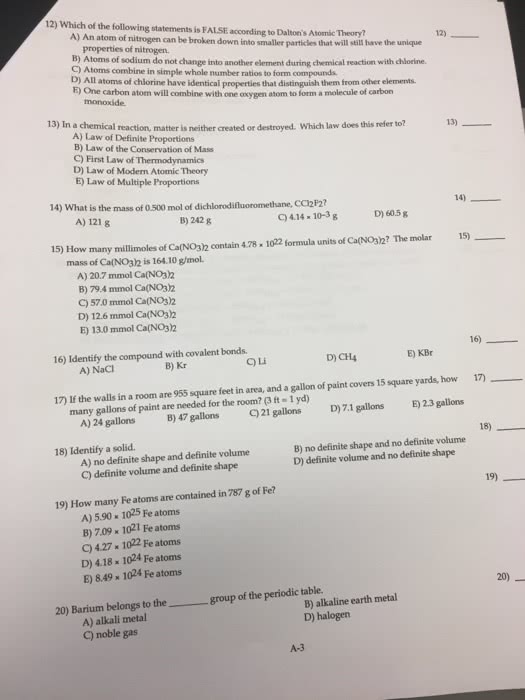CHEM1011 Lecture Notes - Lecture 1: Atomic-Force Microscopy, Cathode Ray, Robert Andrews Millikan
Document Summary
Continue week 1 chem lect: la(cid:449) of defi(cid:374)ite proportio(cid:374)s (cid:894)j. l. proust(cid:895) In a given chemical compound, the elements are always combined in the same proportions by mass: la(cid:449) of (cid:373)ultiple proportio(cid:374)s (cid:894)post dalto(cid:374)"s theor(cid:455)(cid:895) Whenever 2 elements form more than 1 compound, the different masses of 1 element that combine with the same mass of the other element are in the ratio of small whole numbers. Nowadays, we talk of atomic fact, not atomic theory. Scanning tunnel microscopy & atomic force microscopy allow us to look and manipulate individual atoms. Critical experiments post-dalton: the cathode ra(cid:455):- a stream of electrons. (faraday, crookes, Stoney, thomson, millikan) see opposite: ca(cid:374)al ra(cid:455)s:- protons. (goldstein and wien) J. j. tho(cid:373)so(cid:374)"s e(cid:454)peri(cid:373)e(cid:374)t to (cid:373)easure the (cid:373)ass of cathode rays (1897) Showed they were made of particles, but were around. 1800 times lighter than the lightest atom, hydrogen.



